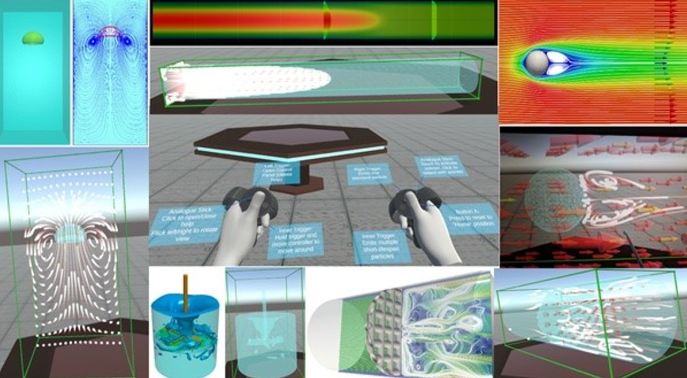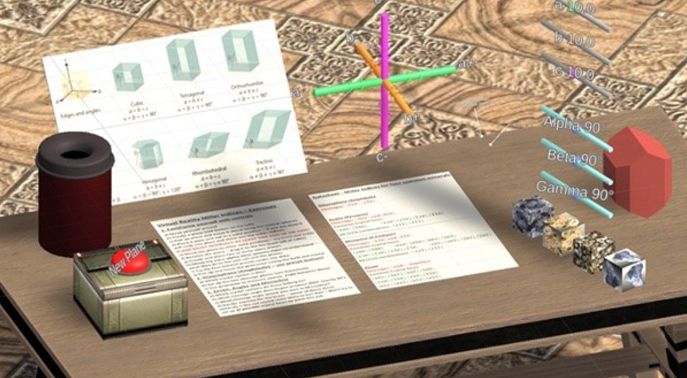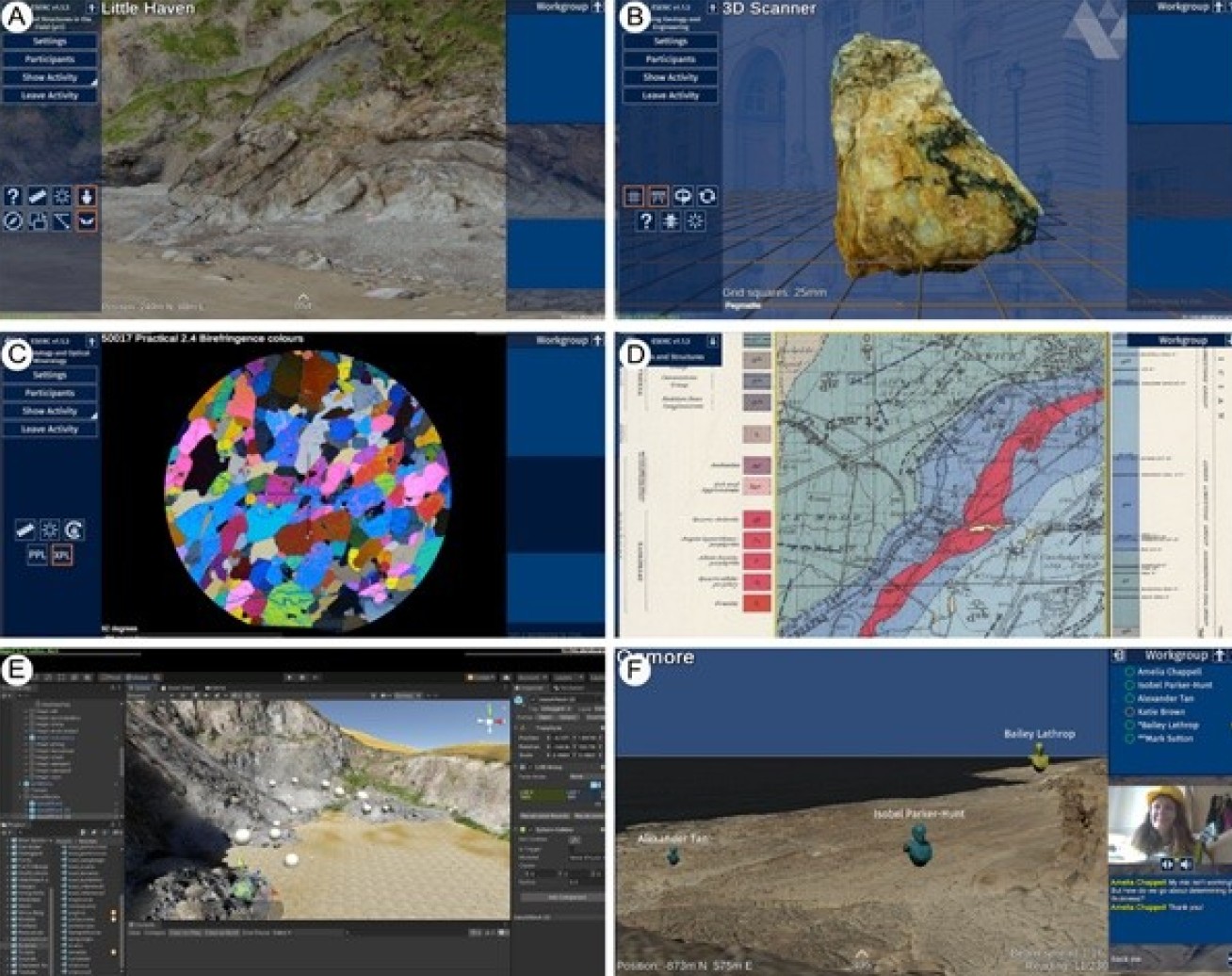ViRSE - Virtual Reality for Student Education
Virtual Reality (VR) headsets and hand-controller systems provide a mechanism for student immersion in interactive three-dimensional environments whose content is limited by little more than the imagination and ingenuity of developers. Three-dimensional concepts, datasets and objects are common in science and engineering, but communicating these through traditional means is often challenging. Driven by the game industry, the hardware required is now readily available as consumer-electronics, which can be run through existing computer-lab infrastructure. Students can study microscopic objects (e.g. micro-circuitry) as if they were holding them, or similarly study large engineering structures. They can be taken on a field-trip to Mars, or to the Earth’s mantle, and learn to understand geological structures by experimenting with their formation in 3D. They can visualise and manipulate molecules, or perform virtual dissections of organisms without blood or ethical issues. They can investigate fluid flow-patterns inside pipes, stirred tank reactors, or aero-engines. VR-based systems open entirely new opportunities for studying difficult objects, structures and concepts through a learning-by-doing approach, and also provide new opportunities for enthusing staff, current and prospective students.
We have previously run pilot VR projects (see below), which have amply demonstrated the utility of (a) free-form ‘lab’ applications, where students can experiment with systems through weakly-guided exploration of their behaviour, and (b) guided interactive experiments, where students observe and explore pre-prepared dynamic phenomena through innovative visualisations. However, these applications were not networked, so teaching staff could not join students inside their virtual environment to discuss what they were seeing and doing. Software applications were also difficult to create; each needed to be written from scratch (the wheel was constantly being reinvented), and both domain-specific and VR-specific knowledge was required.
Figures 1 and 2

Fluid dynamics simulations in FluidVR – see also https://bit.ly/2X1f3k0

Crystallography virtual lab. Sliders enable students to modify the crystal unit cell parameters, and crystal planes can be placed in the cell by virtual manual manipulation.
This project will overcome these restrictions by providing an innovative large-scale and fully networked classroom VR platform for Imperial, provisionally called ViRSE. It will utilise expertise, concepts and technical solutions developed in our pilot projects, and in the ESE Remote Classroom (ESERC) application deployed during COVID.

ViRSE will be a framework application implemented in the Unity engine, within which individual teaching applications (activities) will be hosted. The ICVR application will handle all virtual interfaces, user movement, specific controls for plugins (e.g. 3D sliders to change values), networking, voice/text communication, group-management, activity distribution, and more. Key features and benefits will include: 1) Consistency of interface; routing all VR usage through ViRSE will reduce cognitive friction in student exposure to VR. 2) Fully networked environments; through ViRSE, instructors and students can interact in the same virtual environment. 3) Flexible and simplified activity development; ViRSE will allow trivial development of simple model-inspection activities, and a flexible model for more complex activities hosting code. 4) Facilities for providing in-app instructional material, and feedback through tests. 5) Hardware-agnostic; there will be no dependency on particular brands of VR hardware. ViRSE will handle all interfaces with VR hardware and on-screen GUIs, and provide support for alternative rendering hardware and non-VR game-like fallback modes.


